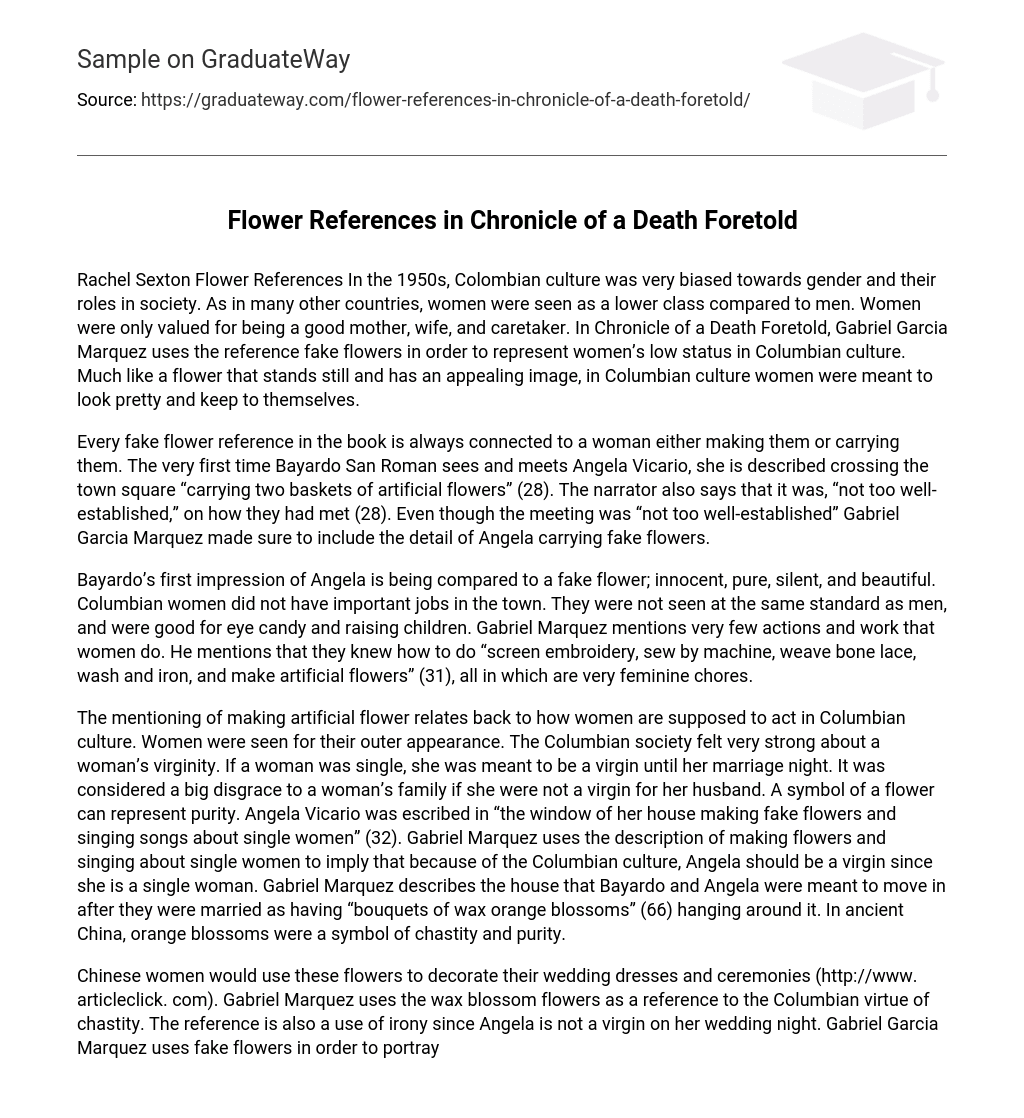Rachel Sexton Flower References In the 1950s, Colombian culture was very biased towards gender and their roles in society. As in many other countries, women were seen as a lower class compared to men. Women were only valued for being a good mother, wife, and caretaker. In Chronicle of a Death Foretold, Gabriel Garcia Marquez uses the reference fake flowers in order to represent women’s low status in Columbian culture. Much like a flower that stands still and has an appealing image, in Columbian culture women were meant to look pretty and keep to themselves.
Every fake flower reference in the book is always connected to a woman either making them or carrying them. The very first time Bayardo San Roman sees and meets Angela Vicario, she is described crossing the town square “carrying two baskets of artificial flowers” (28). The narrator also says that it was, “not too well-established,” on how they had met (28). Even though the meeting was “not too well-established” Gabriel Garcia Marquez made sure to include the detail of Angela carrying fake flowers.
Bayardo’s first impression of Angela is being compared to a fake flower; innocent, pure, silent, and beautiful. Columbian women did not have important jobs in the town. They were not seen at the same standard as men, and were good for eye candy and raising children. Gabriel Marquez mentions very few actions and work that women do. He mentions that they knew how to do “screen embroidery, sew by machine, weave bone lace, wash and iron, and make artificial flowers” (31), all in which are very feminine chores.
The mentioning of making artificial flower relates back to how women are supposed to act in Columbian culture. Women were seen for their outer appearance. The Columbian society felt very strong about a woman’s virginity. If a woman was single, she was meant to be a virgin until her marriage night. It was considered a big disgrace to a woman’s family if she were not a virgin for her husband. A symbol of a flower can represent purity. Angela Vicario was escribed in “the window of her house making fake flowers and singing songs about single women” (32). Gabriel Marquez uses the description of making flowers and singing about single women to imply that because of the Columbian culture, Angela should be a virgin since she is a single woman. Gabriel Marquez describes the house that Bayardo and Angela were meant to move in after they were married as having “bouquets of wax orange blossoms” (66) hanging around it. In ancient China, orange blossoms were a symbol of chastity and purity.
Chinese women would use these flowers to decorate their wedding dresses and ceremonies (http://www. articleclick. com). Gabriel Marquez uses the wax blossom flowers as a reference to the Columbian virtue of chastity. The reference is also a use of irony since Angela is not a virgin on her wedding night. Gabriel Garcia Marquez uses fake flowers in order to portray the expectations of women in an old Columbian society. He does this in order to help the reader to really understand the culture and ethnic background.





